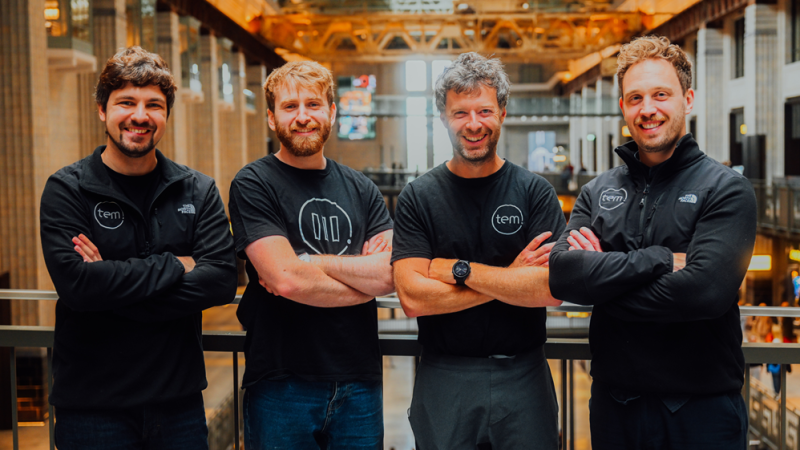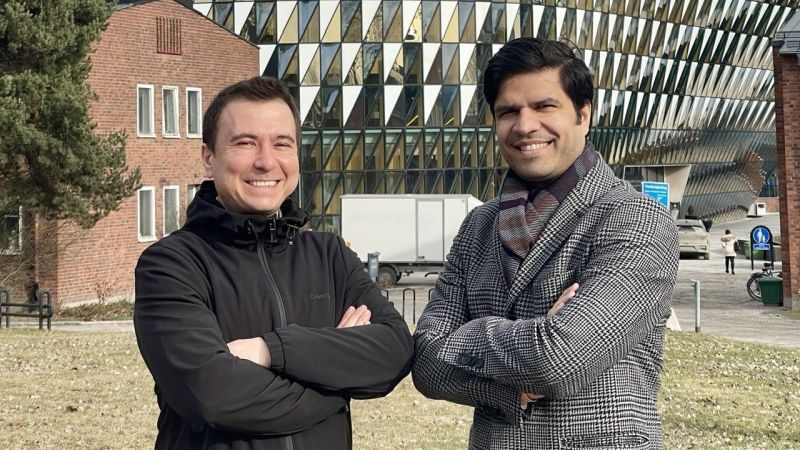Our story starts in 2001, at a press conference co-hosted by UK Prime Minister Tony Blair, and the US President Bill Clinton. Together they announced that the entire human genome had been decoded, heralding the launch of the genomics revolution. “The promise was that we would be able to look at the DNA of each individual in the world and see what disease they would develop and how to prevent it,” says Jon Heimer, CEO of Olink Proteomics. “Of course, now it is nearly 25 years later, and we have seen tremendous investments in DNA, but it turns out we are born with one set of DNA and die with the same set of DNA and there is very little we can do about it.”
While Heimer points to some fantastic improvements that have been made in some areas, the genomics revolution did not quite unlock as many treatments as people at the time had hoped. But biology is complicated, and DNA is only one part of the equation. The instructions in DNA are transcribed to RNA, which is then translated into proteins.
“Compared to the four-letter language of genomics, proteins are vastly more complicated, and no technology has been able to unlock that with single plex data quality,” Heimer tells us. “This is where Olink comes in.”
Olink Proteomics has introduced a unique, disruptive technology that has unlocked proteomics for large-scale human proteins in a way that has simply never been possible before. It is not just a new tool or a new technology, it opens up an entirely new field of research.
“The future is not going to be solely about DNA or RNA. It will be a multi-omic picture that reveals a complete, real-time understanding of human biology, with proteins being the most important factor,” Heimer shares. “They are extremely dynamic in real-time between health and disease so excellent biomarkers and of course the target of most drugs so vastly important for global life science.”
 A Whole New Field of Research
A Whole New Field of Research
Olink was established to open up this field of research in 2016, with a team of only 25 people and a revenue of zero. Today the company has grown to 850 people, generating $170 million in revenue after achieving profitability in year two.
It has focused on circulating proteins, the ones found in blood.
“It is the most easily accessible sample type for clinical work and for treating patients. But it also provides a mirror of what goes around the whole human body,” Heimer says.
It is a whole new research area with huge potential.
“In the past, we have basically studied proteins one by one,” Heimer says. “Now we can enable a large study of human proteomics at a scale which we have never been able to attempt before.”
But while Olink are the first to unlock this field of research, they are far from the first to attempt it, and naturally, this attracts scepticism.
“Many technologies have tried to do what ours do and made the promises that they can do it, but I think ours really have cracked the nut and truly delivers,” Heimer says. “That means we have been met by healthy scepticism. Scientists are sceptical by nature. We have to demonstrate that we have cracked this problem and that our solution works. We offer rigorous analytic characterisation that has allowed people to feel comfortable with the technology.”
The real test, what Heimer called “The ‘Wow!’ Moment” comes when scientists get to apply the technology to their own samples, however.
“That is the key moment, and they find it fascinating for their own research,” Heimer says.
Of course, the other challenge in opening up a brand-new field of research is that there are no pre-existing experts. Fortunately, there is no shortage of people willing to learn.
“People who follow this research area tend to keep an eye out for new and ongoing trends. So many of the people you would speak to in the field want to work with Olink because they see that this is the future,” Heimer tells us. “The very same people who were part of enabling the genomic revolution now want to be on the proteomics bandwagon to drive the revolution there. We are talking to people who have worked with other -omics, like genomics and transcriptomics (which focuses on RNA). There are also lots of people who worked with smaller scale proteomics and want to take that to its full potential.”
 The Next Phase
The Next Phase
One thing that is clear from talking with Heimer is that, regardless of how far Olink Proteomics has come so far, this is only the beginning of the story. So far Olink has been engaged in the first stages of development, basic research, and discovery, but now the company is ready to take the next step.
“Our customers are now taking the first steps into implementing this research in clinical development,” Heimer informs us. “The next step, as the field matures, will be putting that into prospective clinical decision-making.”
So, could proteomics be the magic bullet that we were promised genomics would be? The answer is not quite that straightforward.
“Here is an important point,” Heimer says. “We are already measuring a lot of proteins today. Troponin, for instance, is a biomarker for heart muscle failure. But human biology is very complex, so what we see today is that there is no single protein that will tell the whole story. We are looking for a multiplex protein answer that we will have to implement in prospective clinical decision-making and diagnostics.”
Heimer does not even believe that the solution lies between different proteins, but in taking a look at the larger picture.
“An important scientific question for all of us is how we can detect cancer earlier. DNA is seeing a lot of investment here, but I think a combination of DNA and protein is what is needed to get the sensitivity and specificity to identify the true positives from the negatives. So we are working towards a multi-omic perspective being taken into patient care over the coming decade across all disease areas.”







